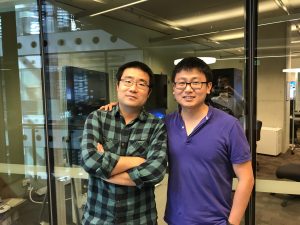In December, we announced the winners of our CST University Publication Award. Every year, we select three papers and one short paper to honor and we are excited to share some of the details behind the winning research. We spoke to Yang Yang to learn more about his team’s award winning paper, “A Wideband Reconfigurable Antenna With 360° Beam Steering for 802.11ac WLAN Applications.”
Tell us a bit about yourself and your team.
I am the team leader of the Group of Millimetre-Wave Integrated Circuits and Antennas and supervising 8 PhD students, within the School of Electrical and Data Engineering at University of Technology Sydney. My research interests include radio frequency integrated circuits, microwave, millimeter-wave and terahertz devices/circuits, reconfigurable antennas, wearable antennas, wearable medical devices, sensors and remote sensing techniques.
What is the challenge that your paper addresses?
Beam reconfigurable antennas with rapid steering of the directed radiation patterns are of particular interest, not only for today’s highly-sensitive radar sensing system, but also for tomorrow’s high-speed artificial intelligence (AI) inspired society. The proposed work fills the gap of low profile, high gain and fast-response beam steering antenna in a dynamic and 360 degree beam scanning environment. The design addresses the market needs of a new antenna suitable for intelligent communications in future wireless systems.

How did you execute the simulations?
A three-step procedure can be summarized for designing the beam-steering patch antenna using reconfigurable shorting vias.
- Achieving desired electric field distribution for concept approval.
- Implementation of RF p-i-n diodes as switches for performance achievement.
- Antenna performance enhancement using external structure (in this scenario, gain enhancement by using reflectors).
Did you face any technical challenges along the way?
The key challenge in this work is the near 50 physical parameters to be optimized to verify the proposed ideal of steering the electric field in 360 degrees, by means of enabling the performance through 18 PIN diodes. Another challenge is the DC biasing planning on the circular patches, either on the topic metal surface, or embedded on the bottom metal surface. Individual control of every single diode is never easy. Thanks go to the powerful software CST Studio Suite, which provides an accurate PIN diode modeling approach, and powerful optimization tools. Special thanks to Dr. Frank Demming, from CST Studio Suite, for his kind technical support from the beginning to the end.
Why did you choose CST Studio Suite over other simulation products?
- Excellent technical support in Australia
- Many useful tutorials online
- Great user interface
- Nice color and luster of the designs
- Visual experience is special
- Both frequency domain and time domain simulators available in one software
What’s next for your team?
Our current projects (2019-2023) are on mm-wave and THz beam forming, shaping and possible steering. They include:
- High-Speed Multiple Beam-Forming Packaging Antenna Arrays for 5G – 77GHz on-chip packaged antennas for unmanned vehicles
- MMIC measurement suite for 5G communications and Internet of Things (IoT)
- On-Chip Direct Radio Frequency to Light Converter Receiver Platform
- Sensing future: millimetre-wave radiation sources in on-chip antenna package
In the near future, we will continuously focus on innovations in millimetre-wave and terahertz integrated devices and antennas for next generation intelligent and immersive wireless systems.

